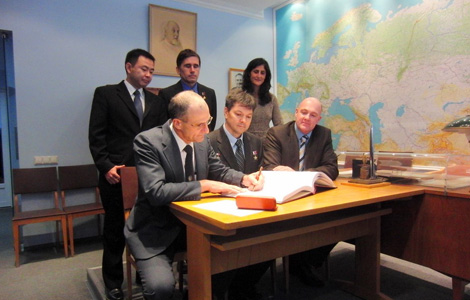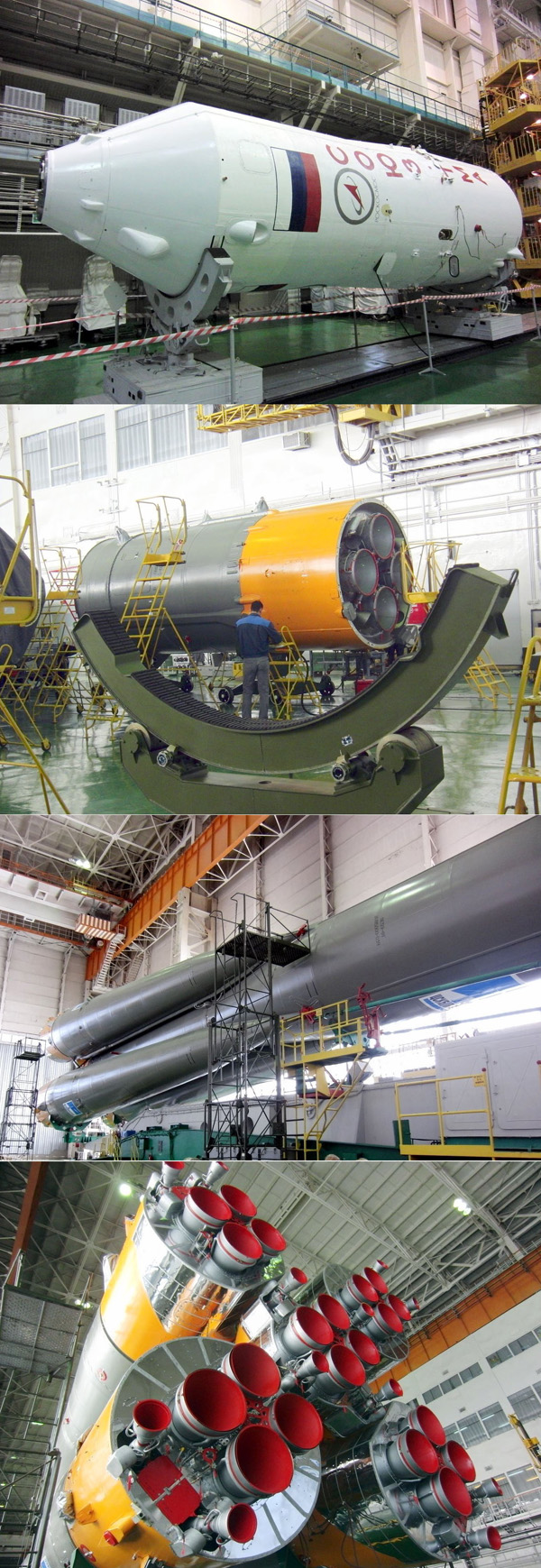Six Months Turns to Ten
There’s more to a Space Station mission than just the time in orbit

Tradition: Signing the guest book in Yuri Gagarin's office at Baikonur, with crewmates Oleg Kononenko and Andre Kuipers, while our Expedition 30 backups (Aki Hoshide, Yuri Malenchenko and Suni Williams) look on.
Space Station expeditions are planned for six months. Some may be a few weeks shorter, some longer. Malfunctions in your spacecraft can impact the mission duration either way by two months or more.
There is more to your mission than just the time in orbit, however. Launching on the Russian Soyuz rocket, the only current means to get to and from Station, requires crews to be in Russia two months before launch. And there is that last week of ESA training with our European colleagues that is tacked onto the beginning of the trip.
Upon your return to the confines of earth’s gravity, there could be a rehabilitation period of up to a week, living in crew quarters under the watchful eye of the flight doctors. The length of door-to-door time away from home easily extends the mission to eight and a half months. Then, once you are home, the next month does not belong to you (or your family). Your body is subjected to post-flight medical experiments; all are necessary to complete the before, during, and after science that is extracted from your soul. So it’s more like 10 months before you are truly able to relax.
Still, thanks to radio, video, and Internet, our ability to stay connected with our families and mission control while in space is unparalleled. We may no longer be on the planet, but we have not vanished from Earth. Compared to the historic exploration experience, we have it good.
Expectations are important. Expedition 6 in 2002 was going to be one of the shortest missions to date, somewhere between 1½ and 2½ months. Because of the Space Shuttle Columbia disaster, which happened while we were on orbit, our mission was extended to nearly 6 months. As my commander told me before launch, “When going to space station, it is wise to be mentally prepared to be gone for a year.” It turns out he was half right.
